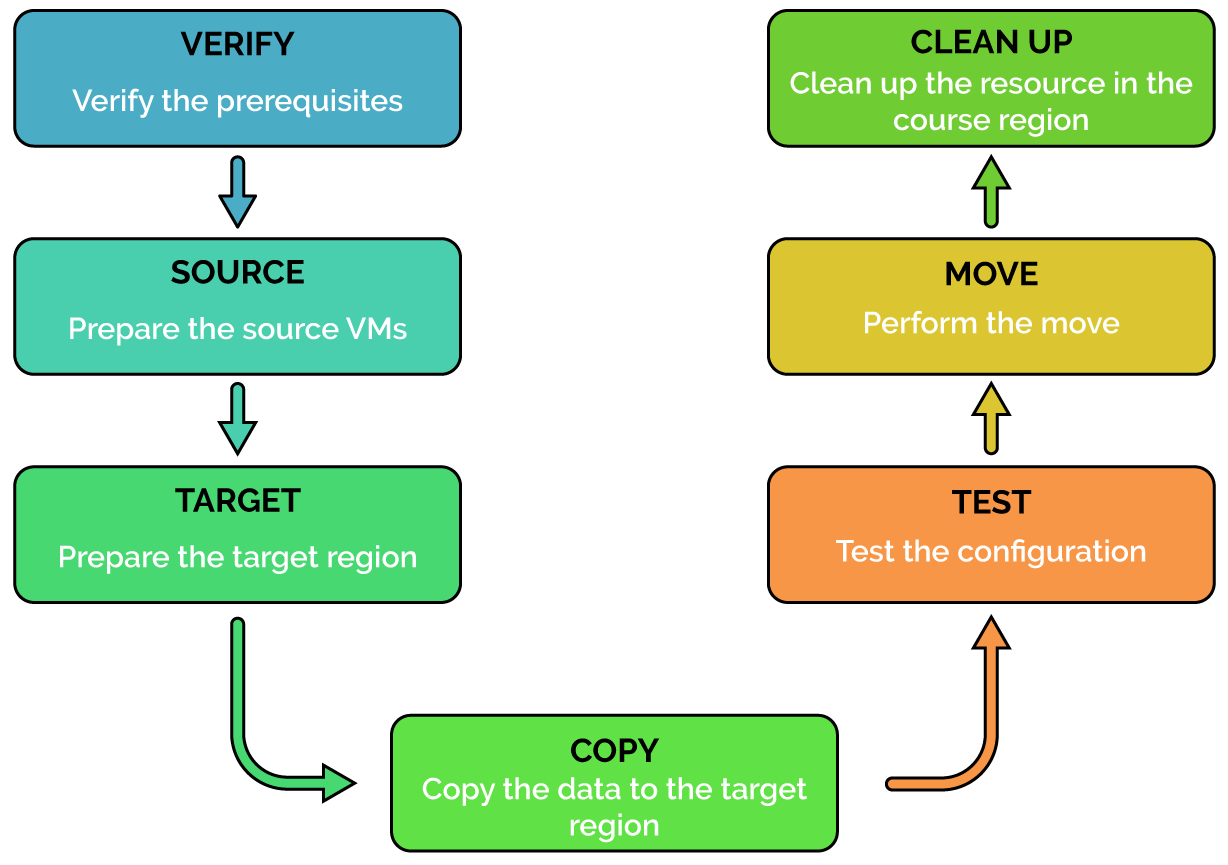Microsoft Azure is one of the most popular cloud computing platforms in the world today. Microsoft is constantly adding new features and new regions to the platform. As a consequence, customers often want to move their existing virtual machines from their current regions to new regions on the platform in order to take advantage of the new capabilities that have been added.

There could be many reasons why one would want to move their Azure IaaS Virtual Machines to a different region, for instance –
- Geographical considerations
When the customer had deployed the virtual machine, it had been deployed in a particular region, but with the coming up of newer regions, moving the virtual machines to another region closer to the end users would be better. So, keeping the end users’ geographies in mind, the VMs would need to be moved.
- Inorganic growth of the organizations
An organization could have merged with another, or have been acquired by another; and the new teams would require all the resources and subscriptions to be confined to one particular region, different from the current one. So, in order to be compliant with the new norms, the VMs would need to be moved.
- Compliance with local rules and regulations
With the changing technologies, governments are modifying the rules and regulations in the larger interest of the masses. Compliance with these is essential for the organizations. So, depending on the rules and jurisdictions governing the organization, the VMs might need to be moved to a different region that the current one to remain compliant.
- SLA requirements
Sometimes, organizations need to move their VMs to Availability Zones (AZ) and if their current regions don’t have an Availability Zone, they would need the VMs to be moved to another region that has an AZ in order to get a higher level of confidence about the availability of their services.
Azure Virtual Machines can be moved to a different region with the same configuration as that of the VMs’ current region or to an Availability Zone to increase the availability SLAs, using the Azure Site Recovery (ASR).
This movement would involve the following steps:

Azure Site Recovery also helps to retain the same source configuration as the target region. When this is done, the VM configuration availability SLAs will be the same, both before and after the move has been done. So, in such a case, a single instance virtual machine, even after the move, will come back as a single instance virtual machine; VMs in Availability Sets will again be placed in an Availability Sets after the move; and VMs in Availability Zones will also again be placed in Availability Zones in the new region after the move.
With Microsoft Azure becoming increasingly popular and commonly employed across organizations, professionals skilled in working with Microsoft Azure are increasingly in demand. More and more organizations are looking to move their virtual machines from one region to another or into Availability Zones. If there was ever a right time to learn all the skills needed to work with the Microsoft Azure platform, it is now.

Cognixia offers a range of courses in cloud computing and Microsoft Azure that would help professionals and workforces imbibe all the necessary skills to be successful cloud professionals, by learning from the most experienced trainers in the industry. You also get a globally recognized certification endorsing the skills you learnt in the course. Reach out to Cognixia today to be a certified expert in Microsoft Azure.

